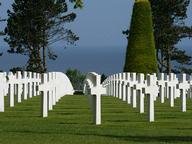Quiz Answer Key and Fun Facts
1. In what year was D-Day, the day Allied forces landed on the Normandy beaches?
2. In what year did the United Nations vote in favour of the creation of an Independent Jewish State of Israel?
3. In what year did Germany invade Denmark, Norway, France, Luxembourg, Belgium, and the Netherlands?
4. In what year did the USSR detonate its first atomic bomb?
5. In what year did the US drop atomic bombs on the Japanese cities of Hiroshima and Nagasaki?
6. In what year did Alan Turing's team break Germany's Enigma code?
7. In what year did the Dambuster raids on German dams occur?
8. In what year was Indian pacifist and leader Mahatma Gandhi assassinated?
9. In what year was UNICEF created?
10. In what year did the Battle of Stalingrad begin?
Source: Author
mazza47
This quiz was reviewed by FunTrivia editor
ponycargirl before going online.
Any errors found in FunTrivia content are routinely corrected through our feedback system.

